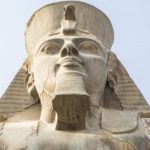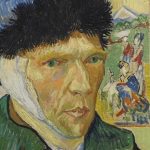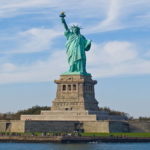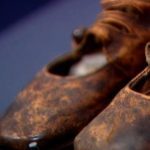 Music
Music  Music
Music  History
History 10 Less Than Jolly Events That Occurred on December 25
 Weird Stuff
Weird Stuff 10 Funny Ways That Researchers Overthink Christmas
 Politics
Politics 10 Political Scandals That Sent Crowds Into the Streets
 Weird Stuff
Weird Stuff Ten Bizarre Facts About The Doge Meme
 Our World
Our World 10 Ways Your Christmas Tree Is More Lit Than You Think
 Movies and TV
Movies and TV The 10 Coolest Stars to Set Sail on The Love Boat
 History
History 10 Things You Didn’t Know About the American National Anthem
 Technology
Technology Top 10 Everyday Tech Buzzwords That Hide a Darker Past
 Humans
Humans 10 Everyday Human Behaviors That Are Actually Survival Instincts
 Music
Music 10 Surprising Origin Stories of Your Favorite Holiday Songs
 History
History 10 Less Than Jolly Events That Occurred on December 25
 Weird Stuff
Weird Stuff 10 Funny Ways That Researchers Overthink Christmas
Who's Behind Listverse?

Jamie Frater
Head Editor
Jamie founded Listverse due to an insatiable desire to share fascinating, obscure, and bizarre facts. He has been a guest speaker on numerous national radio and television stations and is a five time published author.
More About Us Politics
Politics 10 Political Scandals That Sent Crowds Into the Streets
 Weird Stuff
Weird Stuff Ten Bizarre Facts About The Doge Meme
 Our World
Our World 10 Ways Your Christmas Tree Is More Lit Than You Think
 Movies and TV
Movies and TV The 10 Coolest Stars to Set Sail on The Love Boat
 History
History 10 Things You Didn’t Know About the American National Anthem
 Technology
Technology Top 10 Everyday Tech Buzzwords That Hide a Darker Past
 Humans
Humans 10 Everyday Human Behaviors That Are Actually Survival Instincts
10 Facts about the Mysterious Tragic Death of Astrophysicist Rodney Marks
Antarctica is known for being one of the harshest environments on the planet. It is also one of the most isolated. If the worst happens, help is often too far away—and the consequences can be deadly. Sadly, this was the case for Rodney Marks, an astrophysicist whose sudden death in 2000 warranted a homicide investigation.
It was the first suspected murder ever to take place at the southernmost tip of the earth, but it wasn’t the first disturbing event to occur there. Since man first explored Antarctica’s mysterious land and waters, distress, fear, and madness have plagued them. A long-standing pattern of paranoia and violence led many to wonder, was Rodney Marks another unfortunate victim of this strange phenomenon? Or was it something else entirely?
To this day, no one can say for sure. See what you make of this mystery with ten facts about Rodney Marks’s death on the world’s most unforgiving continent.
Related: Ten Ghost Stories Below the Antarctic Circle
10 The First Expedition to the End of the Earth
Antarctica’s first-ever scientific exploration expedition began on August 16, 1897, when a three-mast whaleship called the Belgica set sail for its largely uncharted waters. The ship became stuck in ice seven months later, condemning the crew to be the first humans to endure winter in the Antarctic. Over time, the men’s minds and bodies began to break down. Dr. Frederick Cook, the ship’s surgeon, described the experience:
“The long… night with its potential capacity for tragedy makes a madhouse of every polar camp. Here, men love and hate each other in a passion which defies description. Murder, suicide, starvation, insanity, icy death, and all the acts of the devil become regular mental pictures.”
Months later, the men’s anguish escalated into insanity, and they found there was a lot more to worry about than the elements. One of the sailors suffered a hysterical crisis that gave way to psychosis, eventually revealing a plan to murder his superior officer to his crew mates. Soon after, another sailor developed severe paranoia and grew more and more convinced his shipmates were conspiring to kill him.[1]
9 Extreme Cold, Darkness, and Isolation Take a Toll
In Antarctica’s summer, the sun lights the sky day and night from October to March and doesn’t set until winter. Then, it only peeks above the horizon, making all the days dark from March to October. Antarctic winters are the coldest on the planet, with an average temperature of -29.92°F (-34.4°C). The coldest temperature recorded was -144°F (-97.8°C). These extreme conditions are more than most can handle, leading to the long-standing rumor that they drive men mad.
People most often experience hallucinations and paranoid delusions. Sometimes, they’ll stray from their ship or base without telling anyone- as if civilization is only a short walk away. They also tend to become obsessed with violence- whether that means threatening murder, fearing it, or both.
Over time, improvements to the infrastructure at research bases made the personnel less likely to suffer from the harshness of the elements. Still, incidents of madness continued to occur. The U.S. Navy started to perform psychiatric evaluations on everyone at its bases in the early 1970s and found “there was at least one and usually more episodes of actual or attempted physical aggression each year. In retrospect, these events were invariably reported at the lowest points of morale during the year and were the source of great guilt, rumination, and preoccupation within the group.”[2]
8 Rodney Marks, Australian Astrophysicist
Born in Geelong, Australia, Rodney Marks was a 32-year-old astrophysicist with a keen intellect, bohemian ways, and an outgoing personality. He was working at the National Science Foundation’s Amundsen-Scott South Pole Station during the winter season.
Employed by the Smithsonian Astrophysical Observatory, Marks was working on the Antarctic Submillimeter Telescope and Remote Observatory (AST/RO) project, which included a 1.7-meter telescope for measuring the spectra of atomic carbon and carbon monoxide in the Milky Way. A task that the frigid, dry atmosphere of Antarctica is ideal for. Before his death, he was working on a problem with one of the telescope receivers, which required a near-absolute-zero temperature.
It was Marks’s second winter at the South Pole after participating in the 1997-98 research season as part of CARA’s South Pole Infrared Explorer (SPIREX) project. He’d received his bachelor’s degree with 1st Class Honors from the University of Melbourne and a doctorate in physics from the University of New South Wales. His thesis research was on the characterization of the South Pole site for astrophysical observations. Working in Antarctica was a dream come true for him.[3]
7 Sudden Illness and Death
According to a police statement, Marks suddenly felt unwell and experienced issues with his vision. He went to bed early but woke in the middle of the night for some antacid tablets. Marks woke again at 5:30 am, vomiting blood. He was taken to BioMed, the base medical center, to see doctor Robert “Robo” Thompson three times over the next 10 hours as he became increasingly anxious, disoriented, short of breath, and pained. When he went into cardiac arrest and lost consciousness, Thompson performed 45 minutes of CPR without success.
Marks was declared dead at 6:45 pm on May 12, 2000. In response, the National Science Foundation (NSF) released a statement that Marks died of natural causes. However, that didn’t turn out to be the case. His body was kept in storage for the rest of the winter, about 5 ½ months, before being shipped for an autopsy in Christchurch, New Zealand. The autopsy found that Marks died from ingesting the equivalent of a large glass of methanol. Another puzzling clue was that Marks had two needle marks on his right arm but no illegal drugs in his system.[4]
6 The Investigation Begins
Antarctica is governed by a treaty signed by 54 nations, so handling crimes there can get complicated fast. Marks’s death was no exception, considering he was an Australian native who worked for an American station and died within a New Zealand territory (called the Ross Dependency). Cooperation is vital in a place like this- with no police, courts, or prisons—and nations have devised a unique way of dealing with it. Typically, jurisdiction falls under their native country.
In Marks’s case, Detective Senior Sergeant Grant Wormald of the New Zealand police led the investigation. Wormald faced two serious obstacles right out of the gate. First, the 49 people at the station with Marks had already left the base and returned home. Second, any potential clues left in Marks’s room or at the base had already been cleaned and discarded. Wormald’s investigation lasted eight years due to several legal, diplomatic, and jurisdictional hurdles. By its end, some of the most critical questions remained unanswered.[5]
5 Murder, Accident, or Suicide?
Suicide was among the first considerations, but Wormald found it to be the least likely. Marks had just gotten engaged to maintenance specialist Sonja Wolter, whom he’d met in Antarctica. They were described as a perfect match—playing in the base’s band together and dyeing their hair together (Marks went purple while Wolter went bright green). They became inseparable. The relationship was just one of several things going right in his life, according to Wormald:
“Dr. Marks had recently formed a close relationship with a woman at the base; he was active in his work and socially at the base. He had no financial worries, and he was striving towards the completion of a significant piece of academic work.”
Accidental poisoning was another possibility. There were speculations that Marks may have ingested the methanol without realizing it or incorrectly brewed his own alcohol. Murder couldn’t be ruled out either. Whether a prank went wrong or something more sinister, it would have been relatively easy for someone to spike Marks’s drink or swap glasses without his knowledge. Unfortunately, investigating these theories proved nearly impossible.[6]
4 No One Would Cooperate
Wormald quickly learned that he would get little, if any, help with his investigation. It wasn’t until 2006 that NSF agreed to forward a questionnaire to the people Wormald wanted to question—but only if it approved the questions first. Only 11 (out of 49) responded. Some of the more critical witnesses were among those who chose not to participate.
Accessing medical reports also took some perseverance- and a few court hearings in 2000, 2002, and 2006, but Wormald finally managed. He also found help from two former NSF staff members, who provided the NSF’s medical report and described the inquiries made into Marks’s death, such as testing lab containers to ensure the contents matched the labels. They also criticized Dr. Thompson’s notes but couldn’t shed some light on the most pressing questions.[7]
3 Alcohol & Drug Abuse
Despite a zero-tolerance policy for drug use and the regulation of the availability and consumption of alcohol, both flowed freely that winter season. Marks’s fiance Wolters wrote about the subject on her blog, “There is an unbelievable amount of alcohol down here.” She added, “I’m not aware of any AA meetings taking place, although it wouldn’t be a bad idea for quite a few people here.”
Some people on the base made “toast Juice,” named for a condition called “toastiness,” in Antarctic parlance, brought on by spending winters at the South Pole. Symptoms include a “short attention span, poor memory, and irritability.” Wormald tested a bottle and found it contained 71% pure alcohol.
There was mention of cannabis plants grown on the base, which some claimed were hidden in the air ducts. An intravenous drug user lived on the base and reportedly offered drugs to others. Marks was a heavy drinker with a high tolerance who used alcohol to mask the symptoms of Tourette’s syndrome [LINK 10]. He also admitted to using intravenous drugs before coming to work at the base [LINK 1]. Many have questioned whether alcohol and drug abuse at the base influenced the NSF’s participation in Wormald’s investigation. [8]
2 A Neglectful Doctor and a Broken Machine
Several of Dr. Thompson’s decisions leading up to Marks’s death were questionable. He didn’t inquire about the needle marks on Marks’ arm and even chose to use the same area to draw blood, for example. Thompson also didn’t use the Ektachem, a machine that measures blood chemistry, because it needed to be recalibrated every time he turned it on—an 8-10 hour process he was “too busy” for while treating Marks.
The problem was a failure of the lithium battery, which allowed the machine to maintain its electronic memory after being turned off. It turned out Thompson would have only had to leave it running for it to have been available for Marks’s treatment. He also testified that the machine was “difficult to use, unreliable, and that the contractor was responsible for maintaining it.” A statement that an expert later argued to be untrue.
Additionally, the forensic pathologist, Marvin Sage, testified that Marks’s chances of survival would have increased significantly with a timely diagnosis. Thompson was unreachable when contacted to respond to these and other points; his current whereabouts are unknown.[9]
1 That’s a Wrap
Coroner Richard McElrea delivered an official statement in September 2008 that raised new questions rather than answering any of the existing ones. The last paragraph of his 50-page report echoed the forensic pathologist’s autopsy findings, then wrapped all the issues together in the later half of his sentence without resolution:
“I formally record that Rodney David Marks… died as a result of acute methanol poisoning, the methanol overdose being undiagnosed and probably occurring 1 to 2 days earlier… [Marks] being either unaware of the overdose or not understanding the possible complications of it, the medical assistance to him being compromised by an Echtachem [sic] blood analyzer being inoperable, death being unintended.”
Sergeant Wormald had his own final words to offer:
“I don’t know if things have changed, but I hope that a good hard look was made at the death and the situation of what transpired down there, and it’s now a safer place to visit. If nothing else, that’s what the family wanted to achieve.”
Wormald and the Marks family got this wish. A new $150 million station was dedicated in 2016. Among the upgrades was a new, modern medical facility with telecommunications equipment that allows specialists to guide station physicians in diagnostic and therapeutic procedures.[10]








